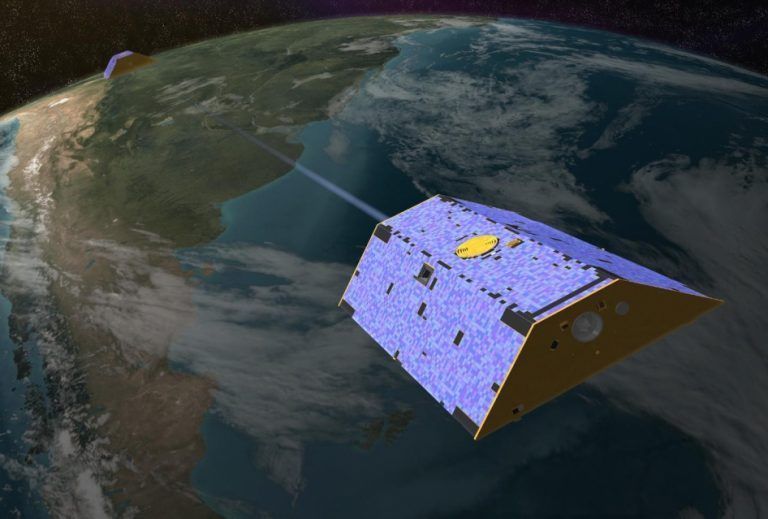
How Important Is NASA’s Earth Science Program That Trump Wants to Abolish?

By Brenda Ekwurzel
Word has it that the National Aeronautics and Space Administration (NASA) Earth Science program is on the chopping block with the upcoming Trump Administration. Bad decision!

The NASA Earth Science program provides information about the Earth that plays a vital role in our scientific advancement, our national security and the American economy. In addition to a robust science program, NASA Earth Science supports fundamental services that underpin economic activities of farmers, the construction sector and small businesses.
Most people know NASA for its moon shots and participation in the International Space Station; many don’t realize that NASA also supports its space mission through its Earth Science program. In order to develop instruments of sufficient “maturity” (reliability in performance and quality of measurements), these instruments need to be tested in airborne measurement campaigns. NASA cleverly combines instrument development with science advancement.
NASA is uniquely positioned to combine lower Earth orbit measurements (like aircraft) and upper Earth measurements (like satellites) to advance our understanding of the Earth processes. NASA operates its own aircraft and can provide the cost-savings leverages available to a large program. In addition, NASA is a major funder of Earth Science through its Research Opportunities in Space and Earth Sciences (ROSES) program, where university researchers are funded to contribute to Earth sciences.
There are so many examples from NASA Earth Science worthy of note. Here is an example of a NASA mission that, if it were ended, would be like a falling domino that topples the rest.
The First Domino: GRACE

One of the most beneficial satellite programs that NASA has is the Gravity Recovery and Climate Experiment (GRACE) satellite. The GRACE mission is a joint partnership between NASA, the Deutsches Zentrum für Luftund Raumfahrt (the German space agency DLR) and other partners. The GRACE mission measures how the Earth’s gravity changes over time. Gravity changes point out areas where mass is changing.
The Second Domino: American Infrastructure
An important use of GRACE gravity data is in support of the National Spatial Reference system (NSRS). This is critical for rebuilding or investing in 21st century American infrastructure. The NSRS is a consistent coordinate system that defines latitude, longitude, height, scale, gravity and orientation throughout the U.S., underpinning all civil positioning and navigation activities in the U.S.

Surveyors, mapping professionals and others use the NSRS to ensure their positional coordinates are compatible and accurate in the creation of maps and charts; marking property boundaries; and planning, designing, and building roads, bridges, and other structures. All of us who live, work or recreate in any building with indoor plumbing depend on accurate spatial reference systems. GRACE gravity data support the development and evolution of the National Spatial Reference System.
The Third Domino: Communities Confronting Sea Level Rise
GRACE is able to monitor the large ice sheets of the planet and help measure mass loss as these large sheets melt. The shrinking ice sheets provide one of the largest contributions to sea level rise. NASA scientists conducting surveys with airplanes outfitted with geophysical instruments are studying possible surprises from Antarctica with consequences for near-term and long-term sea level rise. Similar studies are occurring over the Greenland Ice sheet. The large ice sheets are the great unknowns regarding sea level rise and must be better understood to manage our rapidly growing coastal risks.

Communities working with architects are already investing in 21st century design to protect coastal communities. Core infrastructure like GRACE or the ice sheet surveys by NASA Earth Science are key information for any community that is less than 6 feet below sea level.
James Hansen: Dangerous Sea Level Rise Will Occur in Decades, Not Centuries https://t.co/Tb6T2OlTdZ via @ecowatch #climate #globalwarming
— DeSmog (@DeSmog) March 28, 2016
If the world did not fully implement the Paris climate agreement then coastal communities would need to know—as far in advance as possible—when would global sea level rise 3 feet, 4 feet, 6 feet? The interactive map by Ben Strauss for West Palm Beach shows 2 feet and 3 feet, sea level rise would inundate areas of the Mar-a-Lago estate of President-elect Trump in West Palm Beach Florida.
The Forth Domino: Agriculture
The GRACE mission can help assess where major groundwater aquifers are being depleted or recharged over a season. Such knowledge can support agricultural decisions such as in the central valley of California. Food produced from this region finds its way to most American homes. Increasing drought in the nation’s fruit and vegetable basket make this information all the more vital.
The Fifth Domino: Stop!
Okay, okay. I will stop. The list goes on and on. Even though dominos falling can be a beautiful sight, let’s not let this happen to the core science infrastructure that underpins 21st century activities and our daily lives.
Brenda Ekwurzel is a senior climate scientist and the director of climate science at the Union of Concerned Scientists.

 233k
233k  41k
41k  Subscribe
Subscribe 
